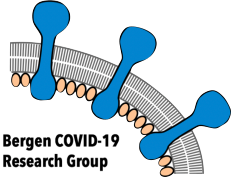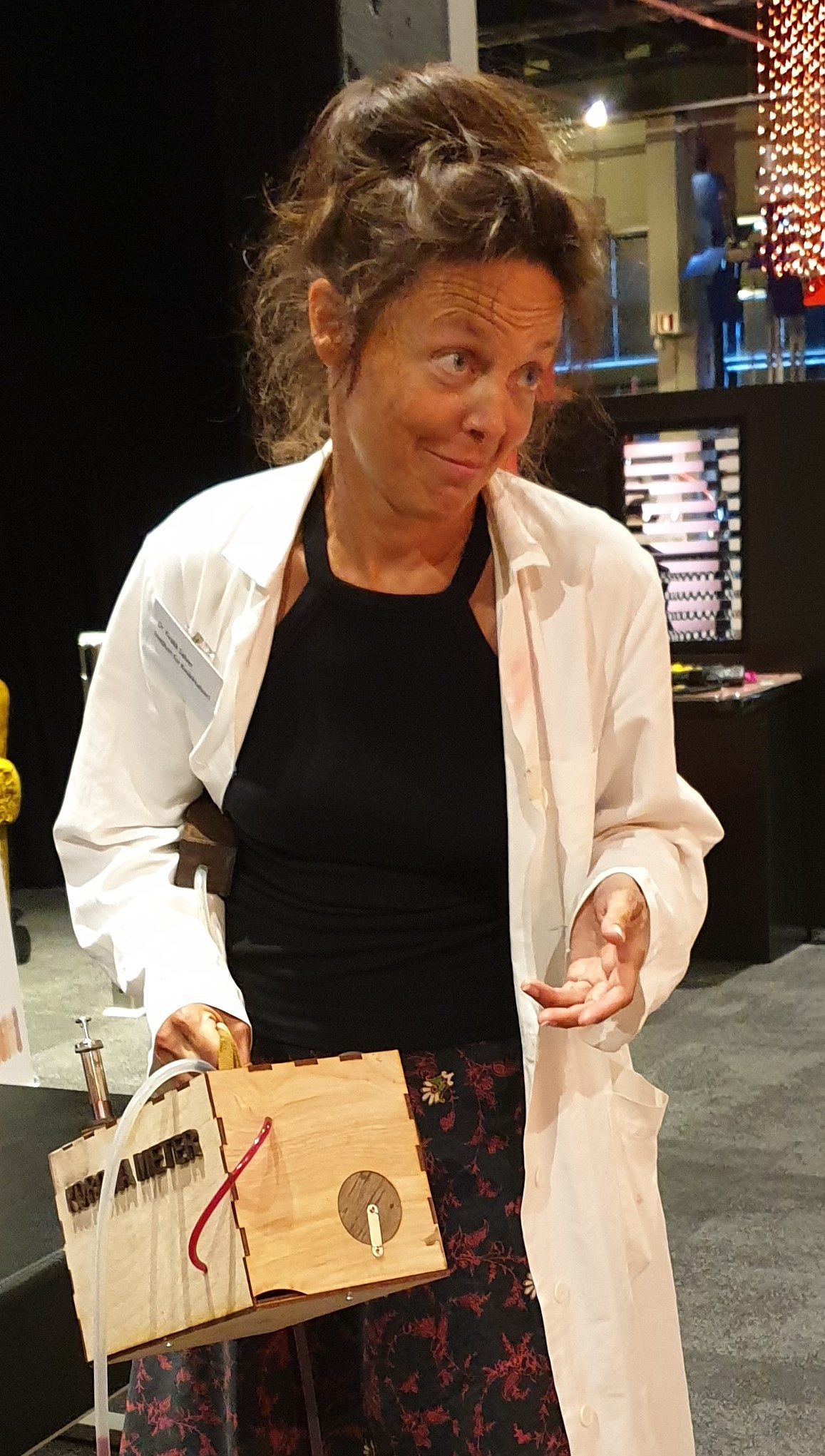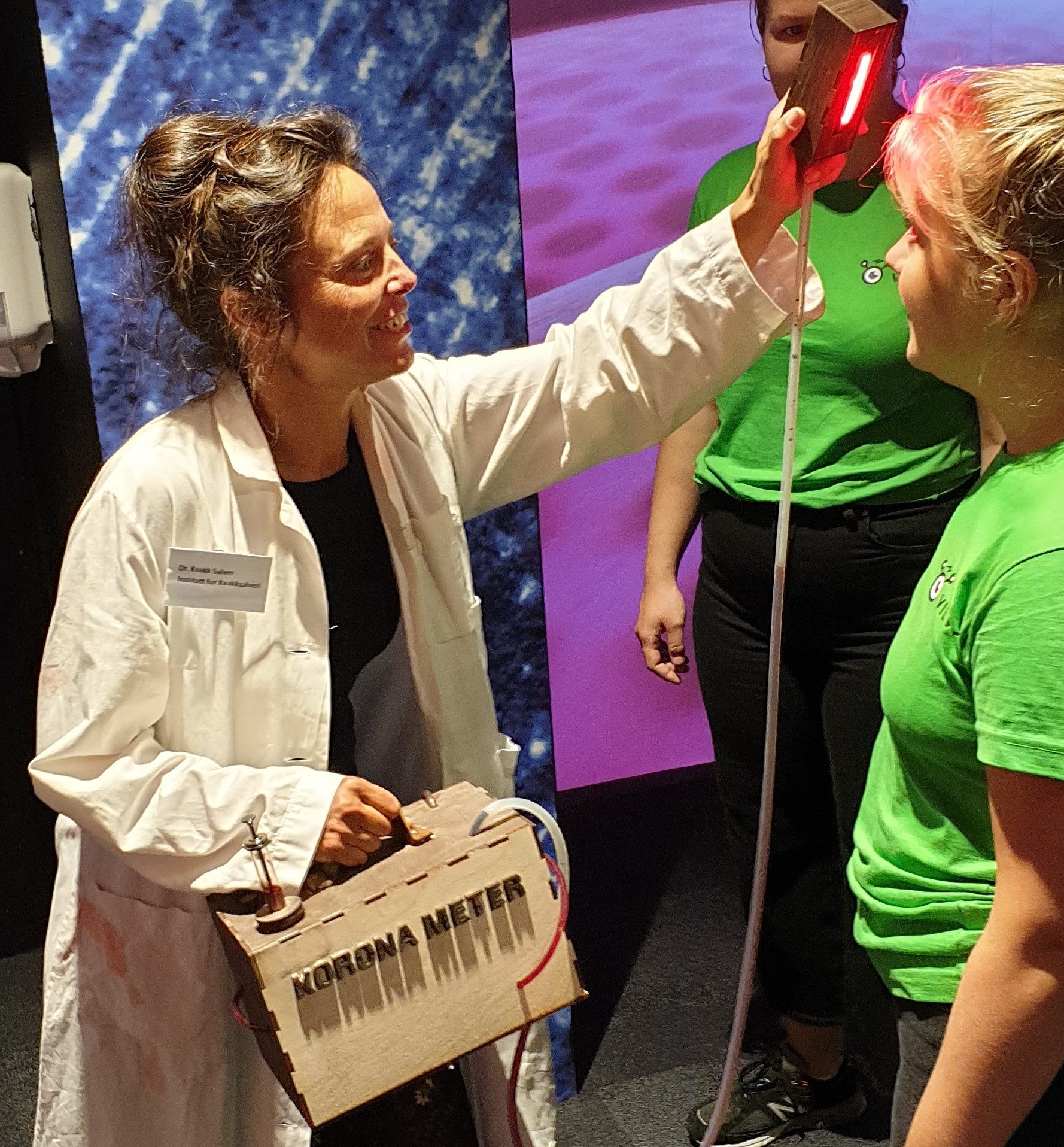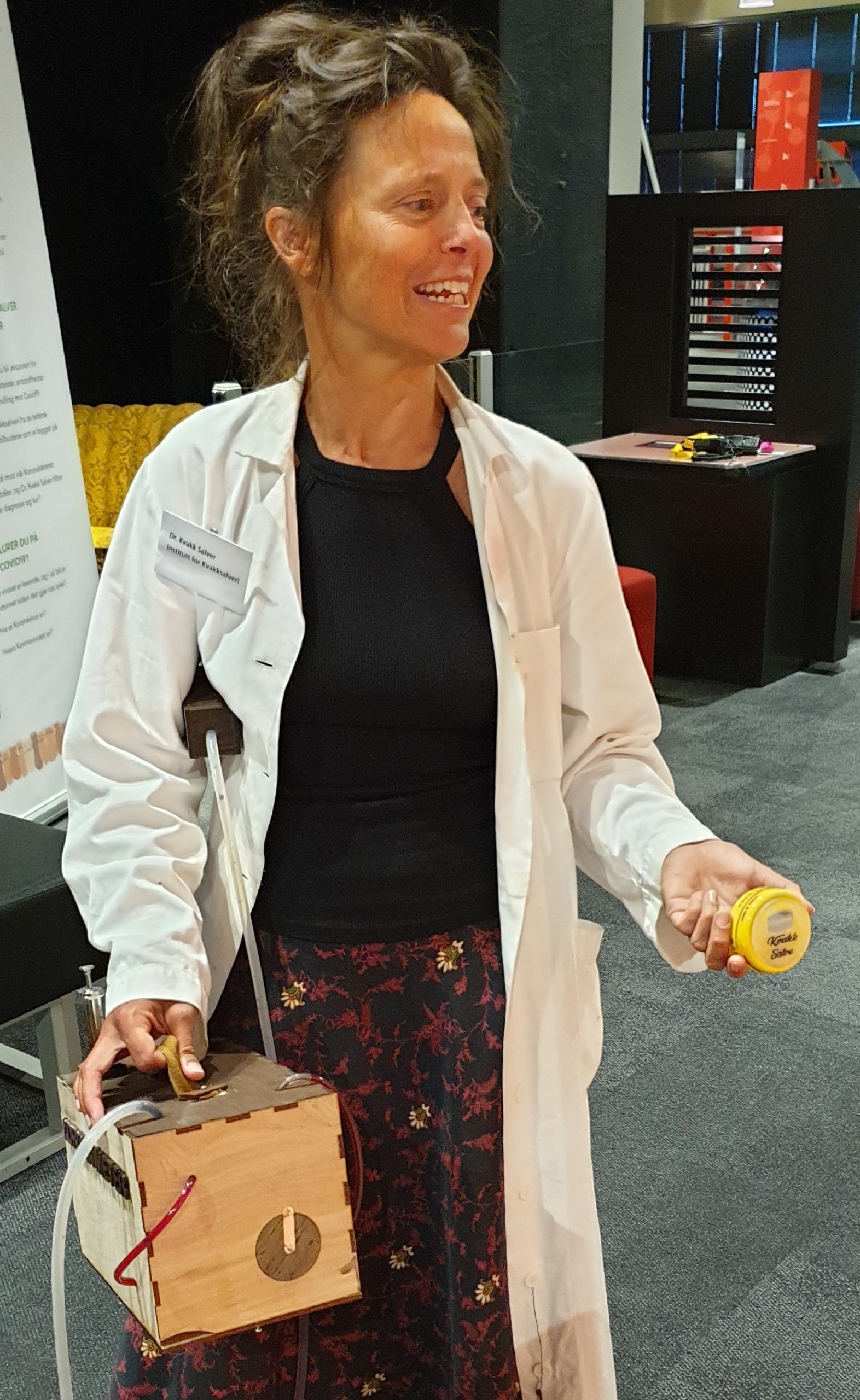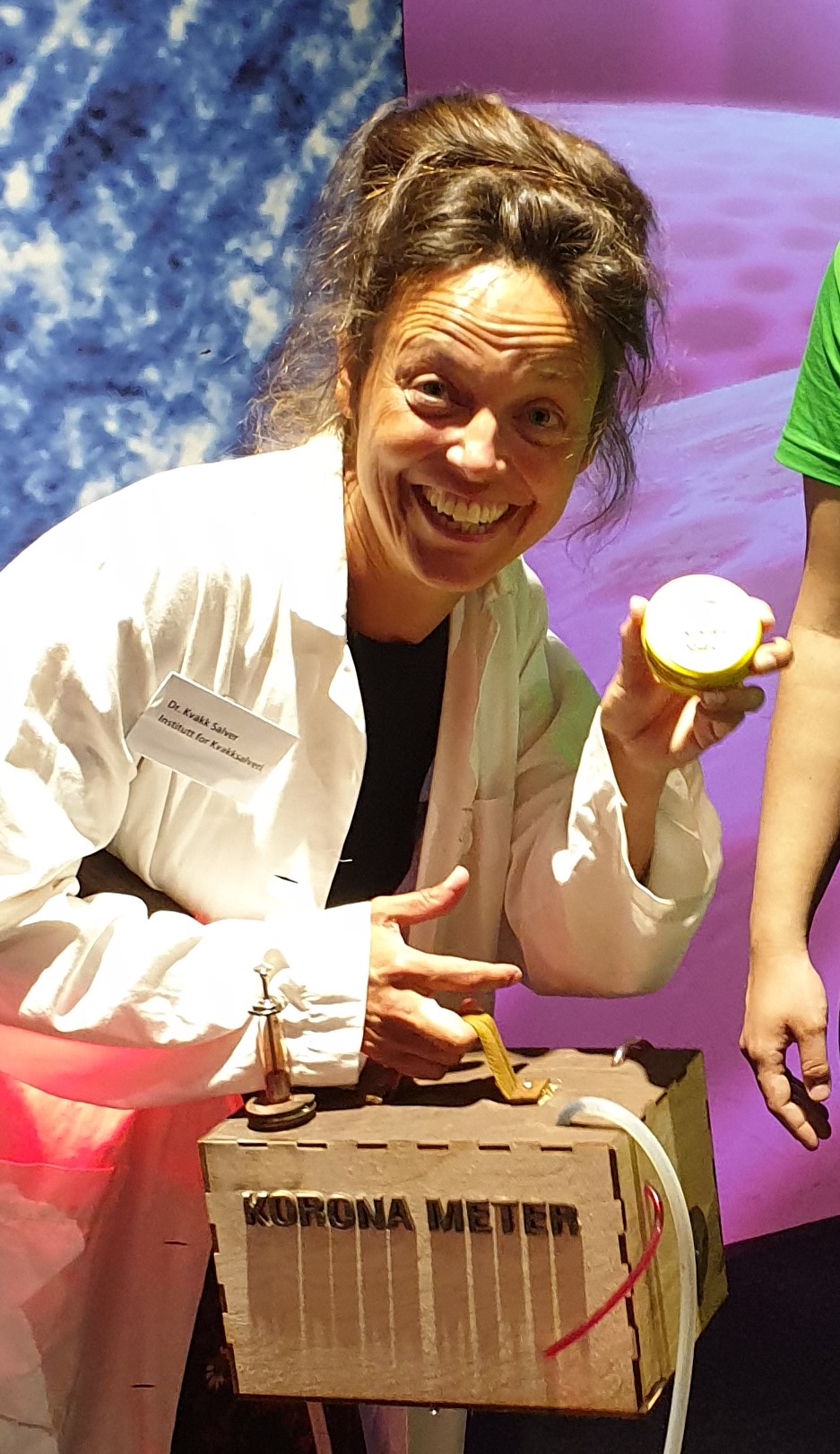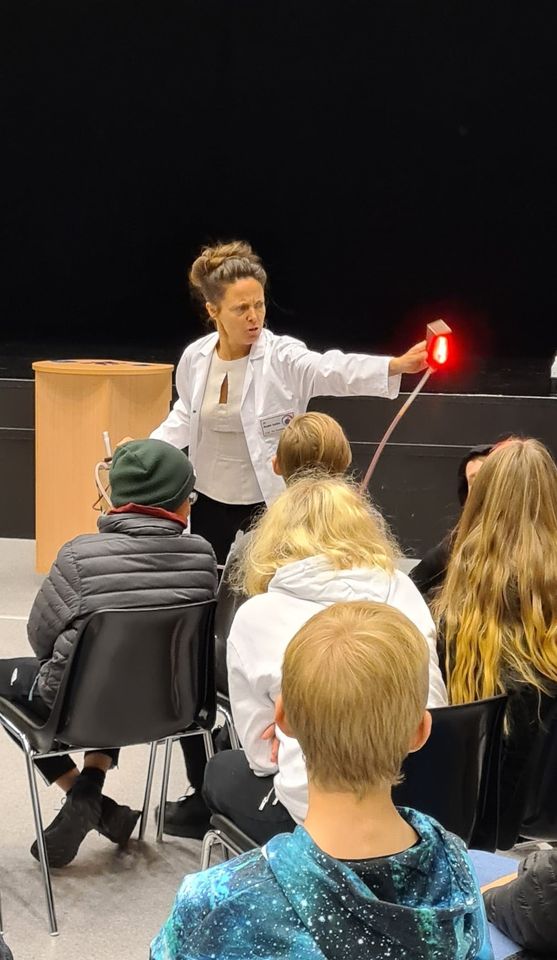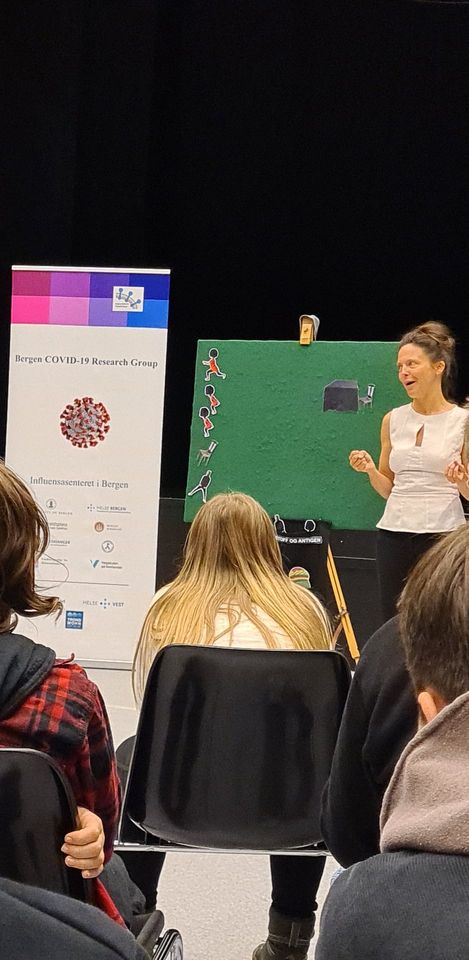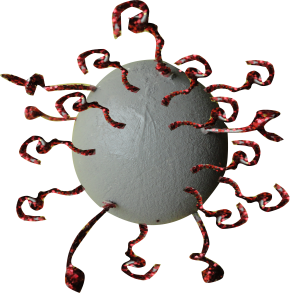

Science To the People presents findings from the Bergen Covid-19 Research group at the University of Bergen. I bring the flannel board and use it to explain why some people get very ill when infected with Sars-CoV2, while others experience no symptoms. Why can Covid-19 be dangerous for the elderly, while most children barely experience discomfort in the throat? Why should you bother to get vaccinated when you yourself are unlikely to get sick from the virus? This offer included lectures, theatre and film about Covid-19. Topics covered are antibodies, antigens, immune response and quackery in the time of the Corona. But first and foremost, you have the opportunity to ask thequestions everyone ponders on depending on the latest article in the newspaper, the current number of infections or the latest report on vaccines.
Pick and choose from the offers: films, lecture and Dr. Kvakk Salver.
An obligate parasite: The virus is a slacker that make the cell to do all the work. The goal of the virus is to make copies of itself. It does so by tricking the cell into treating the virus’ genetic material as if it were the cell’s own. The cell is tricked by the virus. In order for the virus is to enter the cell, it applies the red spike on the outside of the virus – S protein (see illustration from the Center of Disease Control [USA] above). This spike fits like a glove to a spike on the outside of the cell. Here, form is really important. If the virus spike extends an arm or a foot, it no longer fits the spike on the outside of the cell and thus the virus can not bind and enter the cell.
Meet the S-protein / spike responsible for virus entry.
How does the virus enter the cell?
Why do the virus have to enter through the mouth to infect? What is it about lung cells that make them so attractive for the Corona virus? What is it the virus has that allows it to enter the cell? And why do not a skin cell get infected? Here you get answers even a 5-year old can understand. (note english undertitles).
How to stop the virus?
Don’t you see the purpose of cleaning your hands to avoid Covid-19? Is it hard to believe that a little water and soap is sufficient to remove a virus? When a shower has never hurt anyone you know. How does hand sanitizer work? Here you get answers even a 5-year old can understand. (note english undertitles)
How does the virus get caught by the antibody?
The virus spike fits like a hand in a glove to a similar spike on the cell, but not only that. In a moment’s weekness, the virus may rather be attracted to an antibody which also fits like a hand in glove to the spike. There a very few such antibodies in the blood, but once the viral spike has made its entrance, there will quickly be many more antibodies that attracts her attention. However, the virus spike will soon regret her decision. Upon binding to the antibody, the virus is sent directly into the mouth of the eating cell (phagocyte). It’s a terrible fate for her, but it prevents you from getting sick, and that is a good thing (note english subtitles).
What happens to an infected cell?
A cell does not keep its innermost thoughts secret to the surroundings. When infected by a virus, it will quickly tell everyone about it. By presenting a small piece of the virus on the outside of the cell. This way, those working in the immune system can recognize an infected cell and destroy it. Unfortunate, perhaps, but it is necessary to prevent infected cells from becoming virus factories that pump out viruses forever (note english undertitles).
Agglutination – An antigen and antibody dance
The antibody has the task of neutralizing an antigen. The antigen is in this case the coronavirus spike. To neutralize means making the virus inactive, preventing it from infecting more cells. The antibody does this by making a knot involving several antigens and antibodies. This is possible because the antibody has two binding points, two legs. Likewise, the virus has several antigens. That is why antigen and antibody bind together in several places and get entirely tangled.Such a knot is called agglutination.
How Vilde Virus tricks the cell Elena Syntena
Here is a performance about Vilde the Virus as she triumphs in tricking poor Elena Syntena, a cell. Pretty sad stuff, but involving funny characters and an exciting plot straight out of microbiology. We come to your school, organisation or culture house.
See here for more info about the show.
Meet Dr. Quack and take her koronatest
Dr. Quack from the Department of Quackery offers corona tests. We are confident you choose our test as it is more comfortable than getting a cotton swab far up into your nose. Test result tend to be positive. But do not despair, we offer treatment: May we tempt you with an ointment of quack to apply where you have virus? Not all quacks are as obvious as this scammer. They rarely introduce themselves as quacks. Keep that in mind when choosing to buy a questionable antibody test online.
Post at “Lærenes dag” – 2022: Immunology on flannel board
Post at Forskningsdagene – 2020: Immunology on flannel board
.Cost: Free for schools, culture houses and organisations.
Audience: youth and adults
Duration of event: 60-80 minutes including questions
Ordering deadline: 1 week in advance.
Needed space: The scenography is minimal. The lecture can be done in a classroom or auditorium
Contact: henriette.ertsas@uib.no Mobile: 97601192

Funding: Westfal-Larsen and Wife Anna Westfal-Larsen’s Public benefit Fund and the following:
